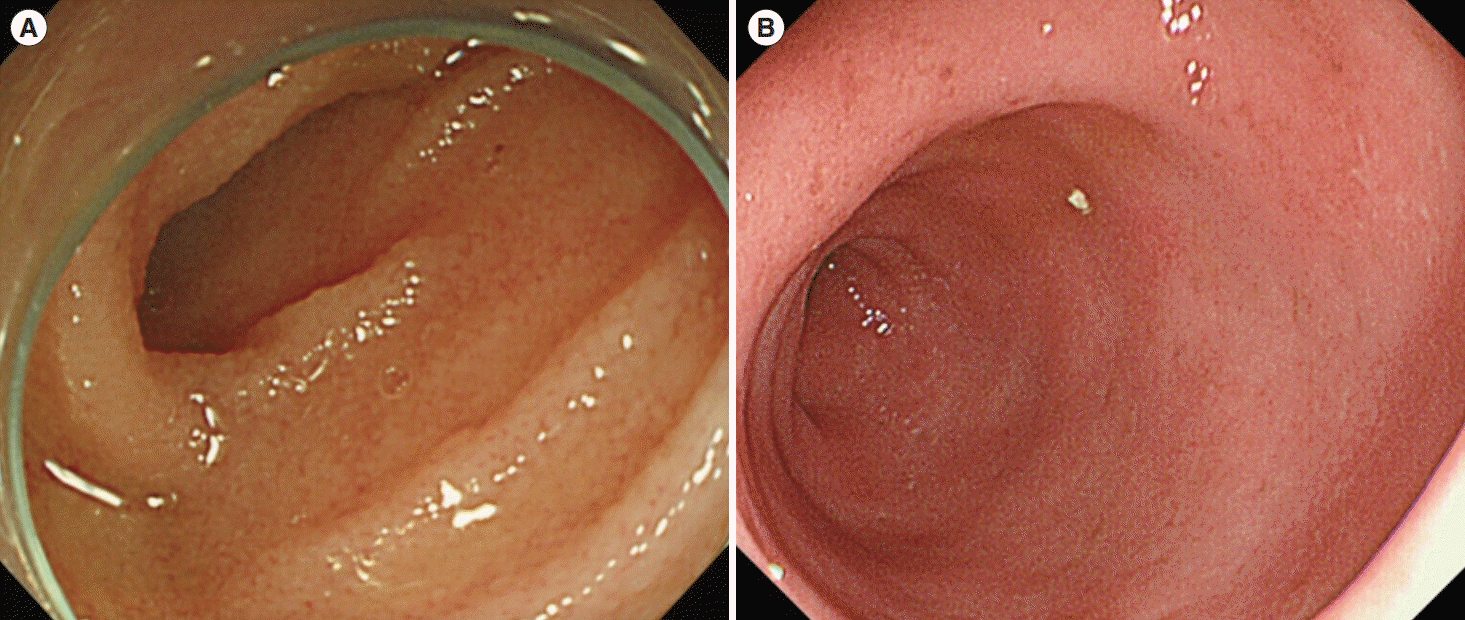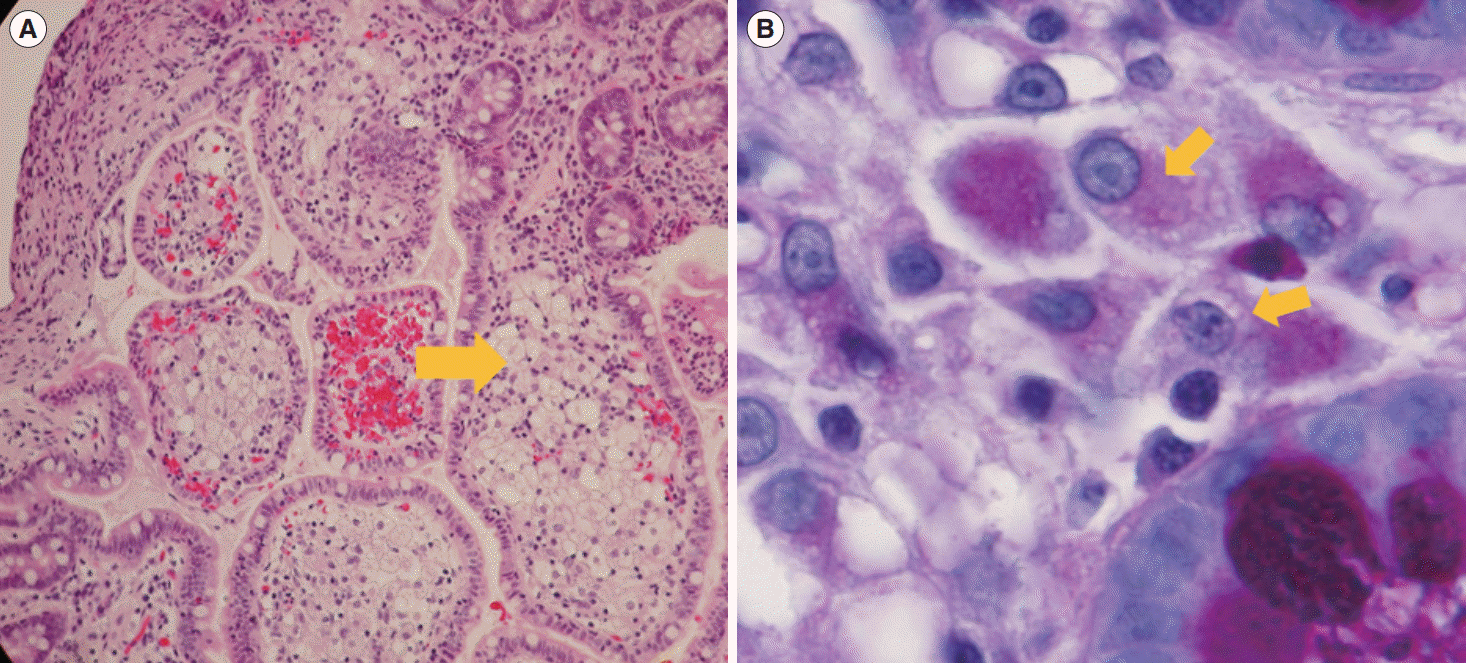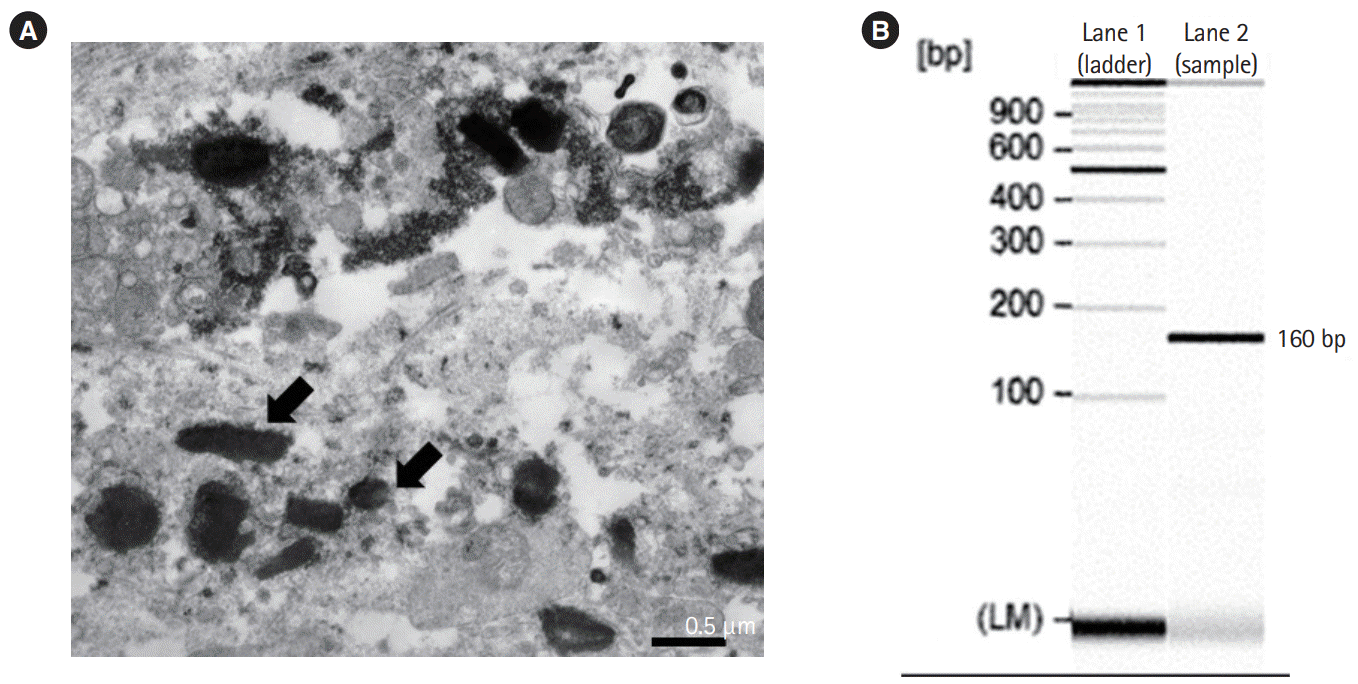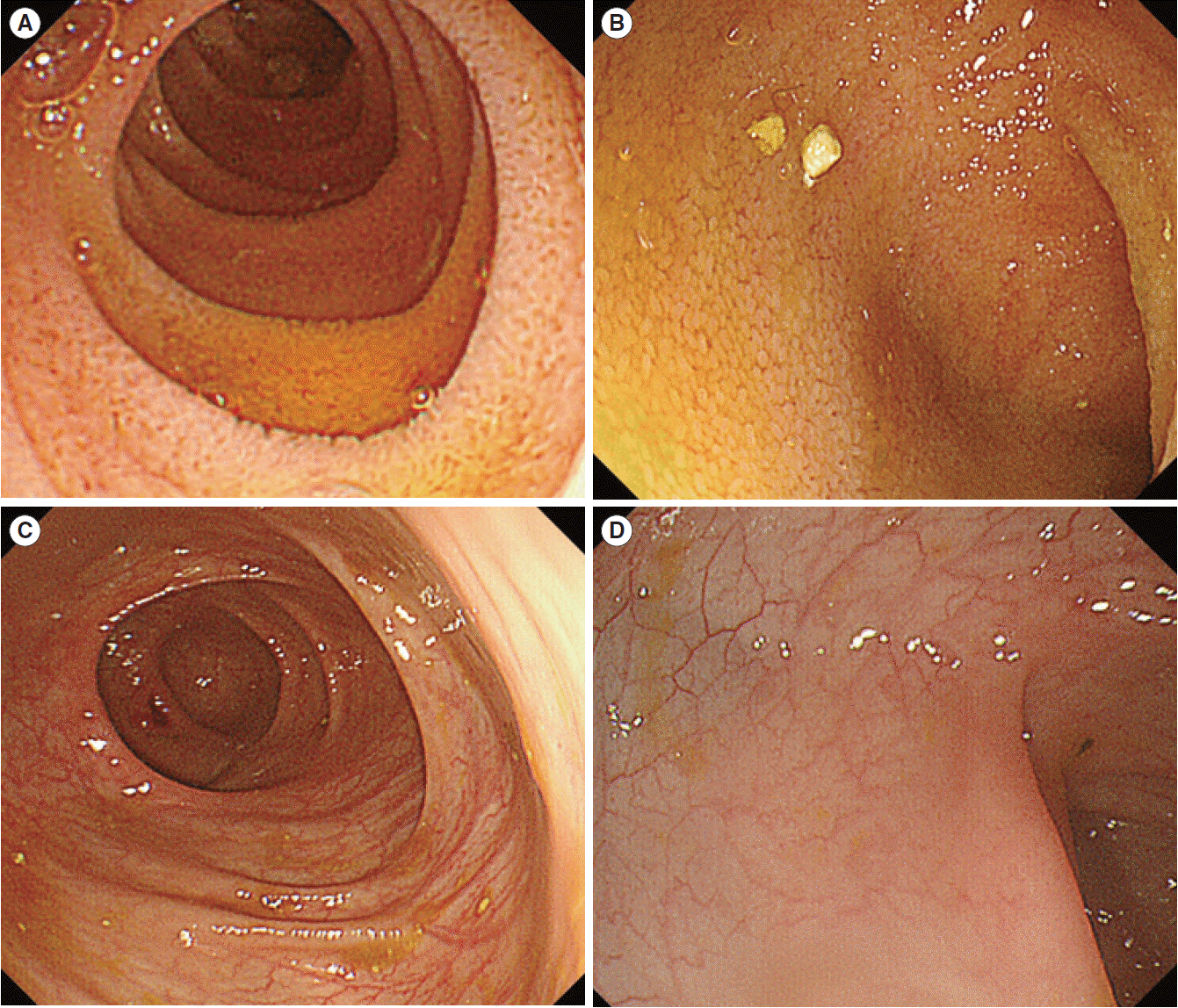1. Benchimol EI, Fortinsky KJ, Gozdyra P, Van den Heuvel M, Van Limbergen J, Griffiths AM. Epidemiology of pediatric inflammatory bowel disease: a systematic review of international trends. Inflamm Bowel Dis. 2011; 17:423–439.

2. IBD Working Group of the European Society for Paediatric Gastroenterology; Hepatology and Nutrition. Inflammatory bowel disease in children and adolescents: recommendations for diagnosis: the Porto criteria. J Pediatr Gastroenterol Nutr. 2005; 41:1–7.
3. Yardley JH, Hendrix TR. Combined electron and light microscopy in Whipple’s disease: demonstration of “bacillary bodies” in the intestine. Bull Johns Hopkins Hosp. 1961; 109:80–98.
4. Yajima N, Wada R, Kimura S, et al. Whipple disease diagnosed with PCR using formalin-fixed paraffin-embedded specimens of the intestinal mucosa. Intern Med. 2013; 52:219–222.

5. Yogi T, Hokama A, Kinjo F, et al. Whipple’s disease: the first Japanese case diagnosed by electron microscopy and polymerase chain reaction. Intern Med. 2004; 43:566–570.

6. Relman DA, Schmidt TM, MacDermott RP, Falkow S. Identification of the uncultured bacillus of Whipple’s disease. N Engl J Med. 1992; 327:293–301.

7. Ramzan NN, Loftus E Jr, Burgart LJ, et al. Diagnosis and monitoring of Whipple disease by polymerase chain reaction. Ann Intern Med. 1997; 126:520–527.

8. Fenollar F, Puéchal X, Raoult D. Whipple’s disease. N Engl J Med. 2007; 356:55–66.

9. Marth T, Moos V, Müller C, Biagi F, Schneider T. Tropheryma whipplei infection and Whipple’s disease. Lancet Infect Dis. 2016; 16:e13–e22.
10. Fleming JL, Wiesner RH, Shorter RG. Whipple’s disease: clinical, biochemical, and histopathologic features and assessment of treatment in 29 patients. Mayo Clin Proc. 1988; 63:539–551.

11. Patel SJ, Huard RC, Keller C, Foca M. Possible case of CNS Whipple’s disease in an adolescent with AIDS. J Int Assoc Physicians AIDS Care (Chic). 2008; 7:69–73.

12. Tan TQ, Vogel H, Tharp BR, Carrol CL, Kaplan SL. Presumed central nervous system Whipple’s disease in a child: case report. Clin Infect Dis. 1995; 20:883–889.

13. Duprez TP, Grandin CB, Bonnier C, et al. Whipple disease confined to the central nervous system in childhood. AJNR Am J Neuroradiol. 1996; 17:1589–1591.
14. Fenollar F, Minodier P, Boutin A, et al. Tropheryma whipplei associated with diarrhoea in young children. Clin Microbiol Infect. 2016; 22:869–874.
15. Günther U, Moos V, Offenmüller G, et al. Gastrointestinal diagnosis of classical Whipple disease: clinical, endoscopic, and histopathologic features in 191 patients. Medicine (Baltimore). 2015; 94:e714.
16. Masselot F, Boulos A, Maurin M, Rolain JM, Raoult D. Molecular evaluation of antibiotic susceptibility:
Tropheryma whipplei paradigm. Antimicrob Agents Chemother. 2003; 47:1658–1664.

17. Marth T. Systematic review: Whipple’s disease (
Tropheryma whipplei infection) and its unmasking by tumour necrosis factor inhibitors. Aliment Pharmacol Ther. 2015; 41:709–724.









 PDF
PDF Citation
Citation Print
Print



 XML Download
XML Download